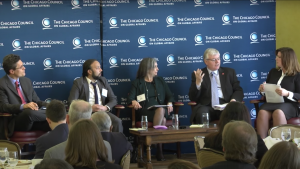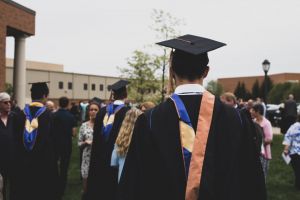This report examines the long-term effects of keeping foreign-born students in local workforces—particularly to critical STEM and innovation fields—in driving US global competitiveness.
Executive Summary
The United States, home to many of the world’s top universities, is a higher education destination for talented students from across the globe. When foreign-born students are able to find work in local economies after graduation, the positive economic effects extend beyond their incomes, especially since many pursue degrees in sought-after science, technology, engineering, and mathematics (STEM) fields.
Yet the economic contributions of many of today’s foreign-born college students are stifled by an outdated immigration system. The temporary nature of F-1 visas, which are not connected to any immigration visa or opportunity, limits international students’ ability to work after they have completed their degrees. And undocumented students brought to the United States as children and educated in American schools face uncertain prospects for work and citizenship.
A first-of-its kind analysis of aggregate transition rates from college to work among three groups of foreign-born college students indicates that only one group—lawful permanent residents (LPR)— are fully transitioning to work in local economies. Undocumented college students are 20 to 30 percentage points less likely than their LPR peers to find local work after graduation. Aggregate transition rates for F-1 visa holders were close to zero.
Policies that increase work opportunities for F-1 visa holders and undocumented students to the same levels as their LPR peers would increase employment levels and tax revenues in nearly every state in the country.2 The 10 states with the most F-1 visa holders stand to gain nearly $8.3 billion in wages and $283 million in state taxes. Among the 10 states with the most undocumented students, those numbers are $1.5 billion and $40 million, respectively.
Programs like Optional Practical Training (OPT) and Deferred Action for Childhood Arrivals (DACA), which offer temporary employment opportunities for foreign-born students, are moving the needle in the right direction. But it falls to Congress to legislate lasting immigration reform, including the following:
- Develop a provisional visa for STEM graduates.
- Allocate H-1B visas for STEM graduates.
- Allow US states to add geographical incentives to work opportunities for F-1 visa holders.
- Facilitate student access to investor visas.
Local economies have much at stake in better retaining talented foreign-born students in their local workforces. But even more important are the longer-term economic effects of fully maximizing foreign-born students’ contributions, particularly to critical STEM and innovation fields, driving US global competitiveness.
 Play Video
Play Video
Past event video of the report release featuring Michael Amiridis, Chancellor, University of Illinois at Chicago; Ujjwal Gupta, Cofounder and COO, BenchPrep; Giovanni Peri, Professor and Chair, Department of Economics, University of California, Davis; Ellen Rudnick, Executive Director, Michael P. Polsky Center for Entrepreneurship, University of Chicago Booth School of Business; and moderated by Natasha Korecki, Senior Reporter, POLITICO.



